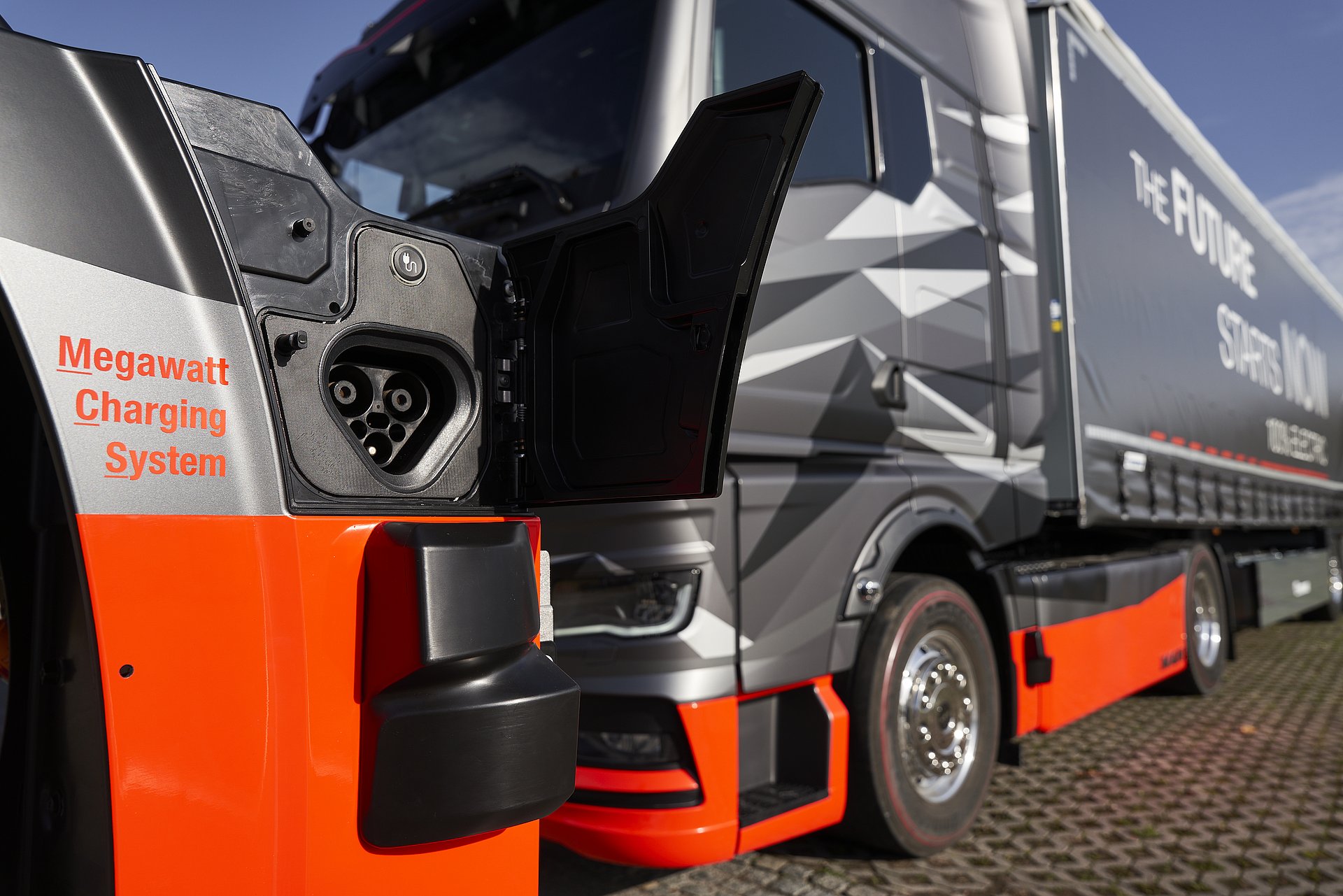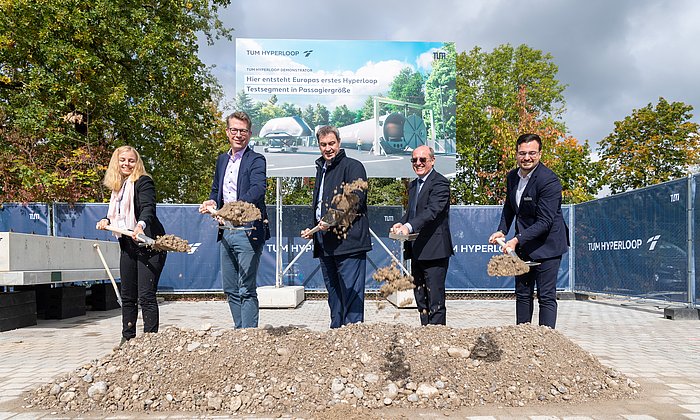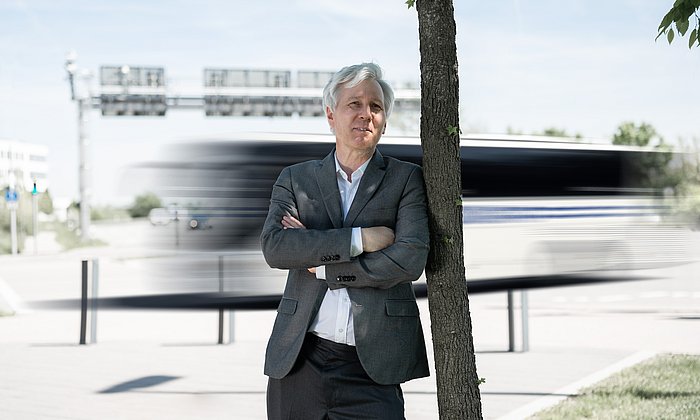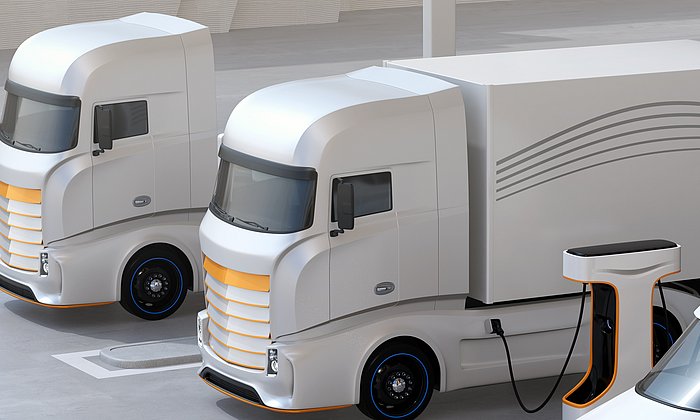NEFTON consortium working on test bench
Plans to triple charging speeds for electric trucks

Approximately 27 percent of the CO2 emissions caused by traffic in the EU in 2019 were attributable to heavy-duty trucks, according to the European Environment Agency (EEA). Thus, it's no surprise that the development of electric drives for this sector is being energetically promoted. Charging capacities of one megawatt are expected to enable charging times that freight carriers can easily schedule during driving breaks. But that still won't be enough for long-haul trips and shift operations. The formulated objective of a science and industry consortium which includes the Technical University of Munich (TUM) and MAN Truck and Bus is therefore to gradually drive development of charging scenarios to reach charging capacities of nearly three megawatts. In order to achieve this goal, the NEFTON research project, financially supported by the German Federal Ministry for Economic Affairs and Climate Action (BMWK), will now develop a testing station which will represent all the components involved, from the charging plug to the battery in the vehicle.
One megawatt soon to be industry standard
The consortium's researchers expect charging capacities of nearly one megawatt in real operations by 2024. This would make it possible to completely recharge the battery of a truck during the 45-minute driving break legally required for drivers. Travel segments of between 300 and 500 kilometers will be possible, depending on the model, battery capacity and driving style. "One megawatt charging capacity will be easy to achieve with the vehicles and the charging technologies of the near future, but that won't be enough for the rapid integration of battery-electric commercial vehicles on a large scale. At three megawatts we can achieve charging times of about 15 minutes, so that intermediate charging will hardly result in any limitations. However, in terms of technology we're entering completely uncharted territory," says Prof. Markus Lienkamp of the TUM Chair of Automotive Technology.
Test bench is to investigate faster charging
In one megawatt charging events the vehicle itself uses an operating voltage of approximately 800 volts and current of 1250 amperes. However, working in the three megawatt range, at 800 volts the current rises to 3000 amperes. A complete change in technology is required for some components In order to achieve such values. The new TUM testing station is to determine how extensive this process will have to be and pinpoint the areas in which new approaches will be applicable. In the automotive sector, high electric currents of more than 2000 amperes can no longer be transmitted using traditional cables due to the considerable challenge of cooling. Accordingly, the NEFTON project will for example do research on power rails and various geometries, such as those with internal fluid coolant or conductors surrounded by liquid coolant, which might offer significantly better heat management.
The research project will also investigate the proper type of protection in case of a disturbance. Until now mechanical switches have been used which could function as circuit breakers in case of an emergency. These mechanical switches are hardly sufficient in the three megawatt charging capacity range, which is why in this case semiconductor technology will be included in the research scope. "Charging at three megawatt has a direct impact on the vehicle, the charging technology and the entire power grid. We'll be using new technologies for many components along the charging path. In several areas today we don't even know what these technologies will look like. Here the new test bench establishes ideal development and optimization conditions," says Prof. Malte Jaensch of the TUM Chair of Sustainable Mobile Drivetrains.

Charging times difficult for all freight carriers
Until now either electric trucks were not used for long trips, or additional charging stops had to be included in scheduling. But the tight timetables in commercial transportation don't leave any room for additional stops to charge up the battery. This is what makes fostering new technologies in the area of charging technologies an essential factor in making alternative drives attractive to logistics companies. "Tripling the charging rate also reduces the charging time by a factor of three under ideal conditions. This means it is also possible for trucks to recharge during the time they spend at the warehouse loading dock. That eliminates the additional charging stop," says Maximilian Zähringer, TUM project manager in the NEFTON project.
Consortium founded in 2021
The NEFTON project began research on a holistic approach to the battery-electric truck as early as 2021. Until now the focus has been on the development of an overall system, working based on the Megawatt Charging System (MCS). The system consists of the vehicle components and the charging technology with up to one megawatt charging capacity. In order to keep the costs of an MCS grid connection at a minimum, buffer storage units have also been realized in the project. In addition, heat management within the vehicle itself has also played a decisive role in the past. The approaches already researched will now be further developed in the next phase of the project.
But the development of innovative charging systems not only applies to local emission-free transport of goods. Since the MCS system is configured bidirectionally, when stationary the trucks can also be used as energy storage for renewable energies generated for example by wind power turbines. These systems also produce energy when demand is low. Buffering and later releasing of electricity using trucks with large-capacity batteries thus not only makes it possible to store energy, but also contributes to power grid stability by absorbing demand peaks.
Participants in the NEFTON project: MAN Truck & Bus SE, AVL Software and Functions GmbH, PRETTL Electronics GmbH, Forschungsstelle für Energiewirtschaft e.V., Technische Hochschule Deggendorf, Fraunhofer Institute for Solar Energy Systems (ISE). Project leader: Technical University of Munich. The project is being funded by the Federal Ministry for the Economy and Energy and managed by Projektträger Deutsches Zentrum für Luft- und Raumfahrt (DLR).
Technical University of Munich
Corporate Communications Center
- Andreas Huber
- huber.a@tum.de
- presse@tum.de
- Teamwebsite
Contacts to this article:
Maximilian Zähringer, M.Sc.
Technical University of Munich (TUM)
Chair of Automotive Technology
Tel: + 49 89 289 15907
nefton.ftm@ed.tum.de


